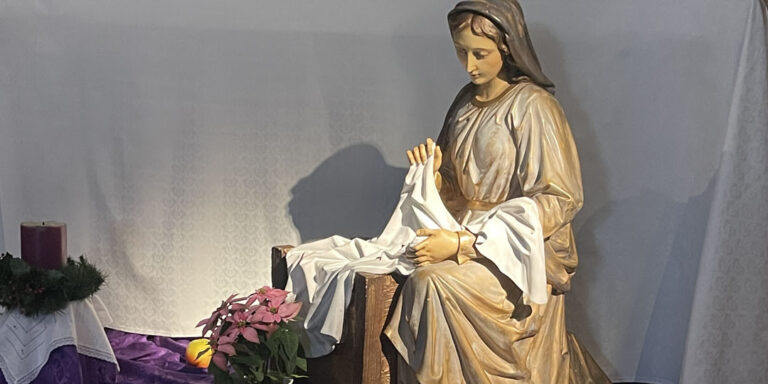
Thursday
We are leaving the beach at Malaga and Torremolinos. Two nights on the Mediterranean with Africa just out of sight across the water.
The bus is heading from the seashore into the mountains and wilderness in central Andalucia. We are heading to the picturesque city of Ronda.
It rarely rains here.
The past week has been packed with activity. The combination of so much stimulation and travel is exhausting, but like having too much coffee, you cannot settle down until you hit the bed. Even then, I have had several nights where my body cannot slow down, and I lie there with my mind and core racing.
The bare-rock mountains and often-wooded valleys are constantly shifting from being lit by the sun or shaded by clouds. A huge, vibrantly colored double rainbow appears off to the north.
The road gets smaller and winds more and more as we ascend to the citadel. The city’s elevation is 2400 feet.
December 8th is a bank holiday. The Feast of the Immaculate Conception. Not being Catholic, I always thought the Immaculate Conception was the impregnation of the Virgin Mary by the Holy Spirit. I learned today that it is actually a celebration of Mary in her mother’s womb. Her apocryphal mother, St Anne, bears Mary as a child whom God has ordained as without the taint of original sin. The first person with that quality since Adam and Eve.
The streets of Ronda were full of people who come from the countryside for the holiday. It is also a day for Christmas shopping to begin. We walked along pedestrianized streets where some shops were open but others were closed for the holiday. Loud Christmas carols fill the air from speakers hung on lampposts. Maybe half are in English. I’ve noticed throughout Europe the songs in cabs and shops have a lot of popular American songs. You would think that the language would rub off from all that exposure to English words. But then, regrettably, I don’t have much talent with foreign languages. I wish I did.
When I was very young, my dad would often take me to the Tech Drug a few blocks from home. The owner to broaden the store’s appeal carried some pretty unusual items, like Airfix toy soldiers and other hobbyist articles. He also carried a good selection of books.
It was on the corner of Main Street and Harlem Road in Amherst, New York. They had a wire counter display of Lilliput Dictionaries.
My father would indulge my pleas and buy one for me. Or perhaps I used my “allowance.” They cost 50 cents, which would have been a full week’s allowance then. I figured if I read them I would learn the language. It didn’t work. But I still bought more of the dictionaries. Turkish? Greek? Dutch… What was I thinking? Well, I was just an idealistic kid—who loved books and thought they were full of knowledge and magic. All you had to do was open them! I think I may have gotten a dozen or so before I exhausted that little shop’s varieties. I bet I still have them in some box packed decades ago and dragged along on various moves. It would be fun to see them again.
We don’t get the Lilliputs very often at Wonder Book, for some reason. Perhaps they weren’t great sellers. But when we do, they sell pretty well for good money.
(That’s a computer-generated valuation. The computer has a pretty good batting average.)
Where was I?
Oh! On the streets of Ronda.
Where am I? Near the rear of the bus, which is wending its way down steep and windy roads toward the plains. I’m a little damp. My PacTech weatherproof coat was not completely impervious to rain. I should remember that and give it away when I get back. The bus rocks to and fro on steep and often tight curves. That makes pecking away on the laptop difficult.
Ronda… when we arrived up there and started walking from the bus station, it was cool, and the sun would come and go. Chiaroscuro everywhere. Objects lit and then immediately shaded.
Miguel, our tour leader, paused us in front of a little ham shop. Spain has a culture of ham. Madrid has shops named Museo de Jamon.
“This may be the best ham in Spain because around here, they breed a special small black pig. In the fall, they release them so they will forage for the acorns from the holm oaks that grow everywhere around here. That diet finishes them off for harvest. The acorns give the ham a special nutty taste you can’t find anywhere else. If you get ham anywhere, you should get some here.”
Another guide somewhere had told us the ham from Salamanca was the best. She described the same small black pigs.
That said, I have had a lot of ham—cured in many different ways—throughout Spain. Breakfast, lunch, dinner… It is on offer ubiquitously.
Ok, back to Ronda.
Our first stop was the bullfighting arena.
“It is the best example in Spain,” Miguel tells us. He gets us audioguides, so each of us can go at our own pace. “Some of you may only want to stay half an hour. Some may want the entire audio tour, which is over an hour.”
It was fascinating to have access to the entire facility. You see where the bulls and horses are kept.
You are permitted to enter the ring with the 4500 seats surrounding you.
Visitors have included Hemingway (of course.) I could imagine him seated in the official’s box above the door where the bull enters (shown at the beginning of the video.) He would relish the masculinity, the spectacle of the blood sport. A bullfight is not something I would go to. Miguel later explained much about the event. “Each event has five bulls. Five matadors… Two replacement bulls should one not be aggressive enough… They are raised without human interaction, so they are truly wild…” But he said he had never gone to one. “It is not really my thing.”
I walked through pretty quickly. I read Death in the Afternoon long ago. And I recalled bullfights from Mexico being broadcast on TV when I was very young. It was very odd, I thought then (and now.) I recall they were on either very early or very late. Grainy black and white video. Was it in Buffalo or Baltimore? I recall there would be polkas parties on TV as well. That had to be Buffalo because my hometown had a very large Polish population. I used to leaf through the telephone book trying to decipher the long names that ended in -ski or -witz. I used to joke to friends later that the book was extra large because so many names required an extra line. And that reminds me of a favorite LA Dodger baseball player. Billy Grabarkewitz. His name was too long for the back of his jersey and needed to be abbreviated. He was an icon for me when he came up to the big leagues. He had a great start, but then faded into obscurity.
Ronda has two old bridges. One ancient and a smaller one, very ancient. Miguel had given us ideas of what to go and see when he had set us loose at the arena. I headed down hill to the very ancient bridge, figuring that might get me ahead of the several tour groups that had been off near the statues of a bull at the same time.
The streets and sidewalks are mostly cobbled or with smaller rounded stones inlaid in cement.
Hemingway also has a garden and a 4 star hotel in Ronda.
The rain started. I stepped gingerly, not wanting to slip on the steep downhill slopes and break something. I finally got down to the lower bridge. Despite the rain and clouds, the view was astounding.
Sort of has the colors of el Greco, doesn’t it?
Having gone down, I needed to go up. That is when the wind started and the rain picked up. Naturally, I’d left my umbrella on the bus. But then I saw many tourists’ umbrellas blowing inside out. I made my way up to the larger, newer ancient bridge. There were more astonishing views. I don’t like heights, and with the complications of wind and rain, I kept a firm grip on my phone when I took pictures.
Why?
There is a huge stone chasm which bisects the center of the city. A rocky stream flows through it far below.
There are lookout spots along many places at the edge of high steep cliffs which protected this place. The vistas were incredible in spite of the weather.
But I’d had enough. Miguel had allowed time enough for lunch, so I still had time to kill. My hair was plastered flat. I looked for a cafe for coffee and a dry seat. I began surveying for a spot that appeared genuinely authentic.
I was so fortunate when I got near the square that the noon bell chimed twelve times. It drew me to the church. I didn’t even know it was there. It wasn’t on our list. I entered the darkened church, and far ahead, the altar was the only spot lit. Soft golden glow. I discovered it was the Church of the Immaculate Conception. It was beautiful with the altar gently lit.
When I approached, I noticed there was a statue of Mary seated on the steps. She was placed there just for the Holy Day. A purple cloth was spread below her. A number of bright red apples were strewn about her, which I sure symbolized something.
Original sin? Temptation?
Maybe the apples are strewn about her showing she is impervious to temptation.
I rested in the calm, dark quiet for a bit and then headed back out into the wind and rain.
I stepped into an old corner cafe which had mounds of enormous tomatoes piled on the counter. Behind the counter was an expert ham slicer. He wore a tunic with his name and 4 stars.
He cuts the thin slices of ham (is it called Serrano here?) into such thin slices you can almost see through them.
I had my coffee at a small marble high top. Opposite me on the wall were old black and white photos of Hemingway and matadors and powerful Spaniards—some shot at the counter where I sat.
(Back on the bus. Damp. Drained. It is pouring rain. The bus is whipped by wind and rain. Miguel quips, “It never rains here. Maybe one day a year in Seville. We are very lucky perhaps we are being baptized for the Day of the Immaculate Conception.”)
And now it is nearly nighttime. We arrived in Seville during late afternoon. Though pretty exhausted and damp from the rain, I headed out right away. The trip is nearly over, and I don’t know if I will ever return.
I will go with the hotel tourist map in hand and see what I can see.
It is a stunning city.
Thousands of Seville orange trees laden with fruit are planted everywhere. The local guide says 40,000.
They are bitter oranges suitable for marmalade and Grand Marnier, but not for eating like an orange.
We were instructed not to pick up even fallen fruit as we could get fined.
It is a city of opera. Carmen, Don Giovanni, The Barber of Seville, The Marriage of Figaro, Fidelio and about 150 others are set in this city.
I walked past the “Royal Tobacco Factory.” Seville was given a monopoly on the weed which was brought back from America (as well as syphilis and many other treasures.) Carmen was a worker in this factory. The “book” is by Prosper Merimee.
Its river, Guadalquivir, is Spain’s only major navigable river. Magellan and both of Columbus’s journeys were launched from here. I thought of those ships heading to the Atlantic Ocean and beyond… The edge of the earth? Asia? Whatever was out there was unknown to Western culture. Just below my feet, 500 years ago, these adventurers sailed off into the unknown.
Spain’s motto was once “Non Plus Ultra”—meaning there was nothing beyond the Pillars of Hercules (which are depicted on the Spanish flag.) That gate from the Mediterranean was the end of the world in Western antiquity. Some decades after the European discoveries of other lands, the motto was changed to “Plus Ultra.”
They had found there was “More Beyond.”
After last week’s story was sent back across the Atlantic, I headed out to explore more of Madrid. It is a magnificent city. Perhaps my favorite after London. But then there is Paris. And Rome…
The week has been so packed with sights and information I can’t list everything. But I ended my afternoon with a stop at the iconic Café Gijón. Hemingway and Dali were regulars. Wikipedia adds:
It was established on 15 May 1888 by Gumersindo Gómez (possibly Gunmersindo García.) Despite modest beginnings, after the Spanish Civil War it became a meeting-place for intellectuals, writers and artists collectively known as Generation of ’36. It was also known by Hollywood stars and foreign writers such as Ava Gardner, Orson Welles, Joseph Cotten, George Sanders, and Truman Capote.
There, I sat at the bar and channeled all the greats who had been there before. The bartender made me a very large negroni.
Ahhh…
I joined the tour on the weekend. We only spent one day in Madrid, but that included an extensive bus tour with a local guide offering commentary. All the days I’ve spent alone exploring the city were enhanced by a couple hours of her adding context to so many things I’d already seen.
This statue, for example.
It is between the palace and opera house. I had passed it many times. I never would have known that Galileo was involved in its design. It was his calculations as to how much weight the horse’s two hind legs would support.
We did a whirlwind tour of the Prado. The guide focused only on paintings by Tintoretto, Velasquez, El Greco and Goya. She started with Tintoretto’s The Washing of the Feet. I’ve known the painting for sure, but her explication opened dimensions to the masterpiece I was never aware of before. When we got to the rooms of Goya, she explained his progression from poverty to royal court painter to old age and a mysterious illness which rendered him deaf. That began his black period, and the Prado has many of those haunting and disturbing canvases.
Witches and monsters devouring humans. Depressing dark troubling canvases.
That afternoon, some of us rode with her for an optional excursion to Escorial and the controversial Valley of the Fallen. The Wikipedia version seems to offer some balance to the accusations of slave labor and other abuses in its construction. As always, there are two sides to most stories, and, perhaps, the truth usually falls somewhere in between. The guide was very helpful with this. She had lived through much of the Franco era and what came after.
I suppose you could consider the builders of the pyramid and Machu Picchu and Angkor Wat …controversial.
Great libraries like the Beinecke and Morgan were founded by persons whose actions in life would not be condoned by today’s contexts.
Whenever I enter some king or steel baron’s museum or library, I balance their lives in the context of their times. A balance is approached with the art and artifacts and buildings they caused to be created… and preserved… in their museums.
I had visited Escorial four years ago. It was an adventure getting there on my own then. But it is so amazing that a second visit was welcomed. Plus, we were being driven with a local guide giving us history and culture and current events as we drove. Here, again, she added so much context to what I had learned on my own.
The palace library was a groundbreaking undertaking and set the course of modern libraries from the old medieval practices. She told us it was the first to store books upright on shelves. The do shelve them fore edge out.
So 21st century designers were not the first to shelve books “backwards.” It is a stunning space.
And a tribute to a renaissance man—Philip II—the king who built it out of devotion and a desire to make his palace a center for knowledge. 40,000 books! Quite a number for the 1500s.
Monday, we left before dawn to get to Toledo. I visited there as well nearly four years. I figured out how to get there by train. That kind of thing is a stressful stretch for me. Back then, I walked from the station and crossed a high bridge over the Tagus and then climbed the steps to the top. Today was a far difference experience. The bus dropped us off at a series of escalators that took us like modern day angels floating to the top of the citadel. Another local guide led us through the city and explicated numerous highlights with facts and anecdotes that were not part of my self-guided DK Eyewitness guidebook tour 4 years ago.
As we crossed onto La Mancha, the guide said something about Cervantes and Shakespeare dying on the same date, but not the same day. Something to do with Julian and Gregorian calendar. Wikipedia doesn’t seem to jibe, but I’ll go with myth if indeed it is one. Life and death were certainly informal back then. Still, it was cool to see windmills like those the poor Quixote battled. I always saw him as an aging noble figure, but progressing to dementia. Dulcinea (“Dull thee nay ah”) takes pity on the sick old man and eases his passing.
I thought the second visit to Toledo would be redundant, but it was a far different experience.
The guide pointed out a couple dozen points on El Greco’s painting in the Church of St Tomes.
Greco is the only one looking at you beside his son in the foreground. The Virgin Mary was modeled by his wife. Christ is being carried to heaven as a baby to be reborn…
My last visit I just gawked at it.
When we stepped outside in the cold drizzle, I saw the word “Hobbit” in the window of a sword and knife show. (Toledo is a city of swords and knives.)
The steel industry here is still a “thing.” Our first stop was at a Damascene forge where silver and gold inlay is still done by hand.
When we were given an hour break for lunch before getting on the bus for the long drive south, I headed for the Hobbit shop. I stopped for relief and ordered a cup of Cafe Americano in an empty cafe. It was tiny, like all “Long Coffees” in Spain. But it was hot and delicious. It cost 1.80 Euros—about $1.90.
I was able to find the Hobbit shop among the myriad of alleyways and hundreds of tiny shops. It was run by an older couple. The wife asked to help me in rapid Spanish. (Do I not look American? Perhaps it is because I’m not wearing shorts and a sports logo t-shirt and “team” ball cap?)
“No abla…”
The husband approached quickly and spoke in immaculate English.
“Hobbits…?”
“Here…” He led me to a counter with dozens of metal soldiers and other figurines. His shop was very far off the beaten path, and I imagine he has suffered in recent years from the COVID drought and the economic issues that continue following it.
At the top of the display were 20 or so Tolkien figurines clustered together. I picked some out.
“Would like to see the ones in the window?”
They were not visible from the inside. He opened the door and led me out into the cobblestone alley. I pointed to a few more.
He carefully wrapped each one. He was very happy with the transaction. As I picked up the bag to leave, he said, “My neighbor has some. Would you like to see?”
He walked me the ten feet across a different alley entrance and spoke Spanish very quickly to the proprietor who could have been his brother. Perhaps he was.
“An American tourist who may spend some money. Hobbits.”
At least that was what I imagined he said.
This proprietor led me to his display. I bent to study the figures. There were a lot of orcs at both places. I wasn’t interested in them. As I studied them, he opened a drawer behind the counter and began setting out figure after figure.
I bought another handful there.
I really have no interest in more “stuff” at this point in my life.
But Tolkien “toy soldiers” are not “stuff.”
Books aren’t stuff either.
Here are a few of them before they were wrapped up.
They will join the Mithril figures I bought at the artisanal shop in southwest Ireland on two visits to southwest Ireland 20 some years ago. They are showcased in a glass case in my office at the warehouse. I’ll show them to you some day. These are not nearly as detailed as those. But… well, I had to have a bunch of them. They will likely be the only souvenirs I will take home.
I chose some more, and the man carefully wrapped each one. First in bubble wrap and then in tiny pages of bags which he taped shut.
Old school service…
I hurriedly splashed my way back to the meeting place in the Plaza Major, with all the marzipan shops surrounding it.
It is nearly dark now. 6 p.m. in the mountains outside of Granada. It has been a long day. 11 hours of driving and walking by the time we get to the hotel.
I’m ready for a martini or any reasonable facsimile.
Miles and miles of olive groves, their leaves silver green—we are crossing from the Spanish state of Castilla La Mancha to Andalucia. The Sierra Nevadas rise on the horizon. Their highest peak 11,000 feet high.
Andalucia, no one is sure of the etymology. Some think it is from Atlantis.
Atlantic theory
Another proposal is that Andalus is an Arabic-language version of the name of the Atlantic. This idea has recently been defended by Vallvé (1986.)
Vallvé writes:
Arabic texts offering the first mentions of the island of Al-Andalus and the sea of Al-Andalus become extraordinarily clear if we substitute this expressions with “Atlantis” or “Atlantic.” The same can be said with reference to Hercules and the Amazons whose island, according to Arabic commentaries of these Greek and Latin legends, was located in jauf Al-Andalus—that is, to the north or interior of the Atlantic Ocean.
The Island of al-Andalus is mentioned in an anonymous Arabic chronicle of the conquest of Iberia composed two to three centuries after the fact. It is identified as the location of the landfall of the advance guard of the Moorish conquest of Iberia. The chronicle also says that “Island of al-Andalus” was subsequently renamed “Island of Tarifa.” The preliminary conquest force of a few hundred, led by the Berber chief, Tarif abu Zura, seized the first bit of land they encountered after crossing the Strait of Gibraltar in 710. The main conquest force led by Tariq ibn Ziyad followed them a year later. The landfall, now known in Spain as either Punta Marroquí or Punta de Tarifa, is in fact the southern tip of an islet, presently known as Isla de Tarifa or Isla de las Palomas, just offshore of the Iberian mainland.
I like that idea. Was it Plato who wrote Atlantis was an advanced civilization on an island outside the Pillars of Hercules? And that it sunk? “Andaluthea.”
We will stay in Granada tonight. And then the south coast of Espana.
One guide stated that the Spanish and Portuguese did all the early discovery because France and England were distracted fighting each other in the Hundred Years War (130 years.) Then the Dutch got involved in exploration. Think Henrik Hudson and New Amsterdam (a.k.a. NYC.)
Tuesday’s first stop was the Alhambra.
Another local guide led us past the long line waiting to get in to a special entrance. On the way, we passed the Washington Irving Hotel.
“What?”
It didn’t click until later that Irving stayed in the place when it had been abandoned and taken over by squatters. He spent time in this room writing Tales of the Alhambra under his pseudonym Geoffrey Crayon.
From there, we headed to the south coast of Spain.
Malaga, the birthplace of Picasso. Our hotel was on the beach where Picasso and Dali would vacation. Our guide enhanced that by telling us that Dali’s wife, Gala, created a bit of a scandal posing for the “first public topless photo” on that very beach. What a surreal couple (pun intended.)
I was so excited that the tour company, Globus, offered an optional expedition to Gibraltar. “Well, yeah!”
Another local guide joined many of us on the bus. He was hilarious and genially teased our permanent guide, the Portuguese Miguel, throughout the day trip.
And there it was on the horizon. One of the two Pillars of Hercules.
Chalk one off the bucket list that I never even guessed would ever be on my path.
Gibraltar is Britain. Kind of. It was ceded to England 400 years ago “in perpetuity” by Spain. (I’ll let you Google it.) But Spain changed its mind many times. Most recently, it was blockaded for decades by Franco and others. To this day, there are no highway signs directing you there. You need to have a guide. (or Google maps.)
Spain still doesn’t like the idea of a British enclave on a Spanish peninsula. But then, Spain has two cities on the coast of Africa, which sticks in Morocco’s craw. (Ceutas and Melilla.)
Once you get to Gibraltar, you need to get out and walk to the border. There is no driving across for tourists.
You walk to Spanish customs, where your passport is stamped. Then you walk to British Customs, where you are checked again. (No stamp.) Your first stop is in the airport for bathrooms. If you don’t have tour buses waiting for you, you WALK ACROSS THE ONLY RUNWAY of one of the most dangerous airports in the world.
Really!
Our minicab driver was a Brit with Gibraltar ancestry. He wore a ball cap with 101st Airborne (I think) in “Operation Iraqi Freedom.” On the console, he had a worn maroon beret folded. It had a metal pin with parachutes on it. His accent was almost cockney. His tour narrative included a lot of military history.
“This is where the only two men from Trafalgar were buried. All the rest were buried at sea. Except Nelson. His body was put into a barrel here, and the barrel was filled with rum. By the time he got to London, the rum was gone. Those sailors were clever. Yep.”
We got to the most southern tip of the peninsula.
“To your left is the Mediterranean. Across the water, those mountains are Africa. The other Pillar of Hercules is that one. Jebel Musa in Morocco. [Jebel Musa is “Mount Moses.”] To your right is the Strait of Gibraltar and beyond is the Atlantic Ocean.”
I stood and stared at the waters on either side of the red and white striped lighthouse. And a few miles beyond were mountains of Africa.
From there, he took us up the “Rock.”
“It is not as solid as Prudential says. There are 50 kilometers of tunnels dug during the various wars for military purposes. And there are many caves as well.”
He was an expert at shifting the old manual transmission on the steep slope. He was constantly speaking as he performed his automotive acrobatics.
We started seeing the monkeys along the edge of the road. The Barbary apes that may have been on the island since before Biblical times, the guide told us.
1 Kings 10:22 ESV: For the king had a fleet of ships of Tarshish at sea with the fleet of Hiram. Once every three years, the fleet of ships of Tarshish used to come bringing gold, silver, ivory, apes, and peacocks.
Some think Tarsis was in southern Spain.
It was strange being up close to so many pretty big monkeys. They were very amusing.
From there, we went to the caves of St Michael. The guide said this was a mythic location of Hercules’ final labor. Battling Cerberus, who guarded the gate to hell. There are plenty of apes outside there as well. The cave is stunning and has light shows throughout. One formation looks very much like an angel. Especially when it is properly lit.
There are vastly deep drop offs thought the cave. Some appear bottomless. Perhaps a gate to hell is down there somewhere.
We were also told a skeleton had been found there long ago. But it wasn’t recognized at the time as the first “Neanderthal” ever discovered.
I am very ready to get home.
Too much stimulation.
And I miss the books and the daily discoveries so much.
I want to fire up the woodstove.
I still have a couple thousand bulbs to plant as well.
When I get back, I will stay home for a while.
Really.
This time.
Last night in Torremolinos (towers and windmills), I walked up the steps that get to the top of a sheer cliff. The city was alive with people. Lots of families with kids shopping the pedestrianized streets.
I came across yet another Sherlock Holmes Pub.
Perhaps that could be a tour sometimes. A pub crawl across cities of Europe which have a Sherlock Holmes Pub.
Books are everywhere. Sometimes you just need to look.

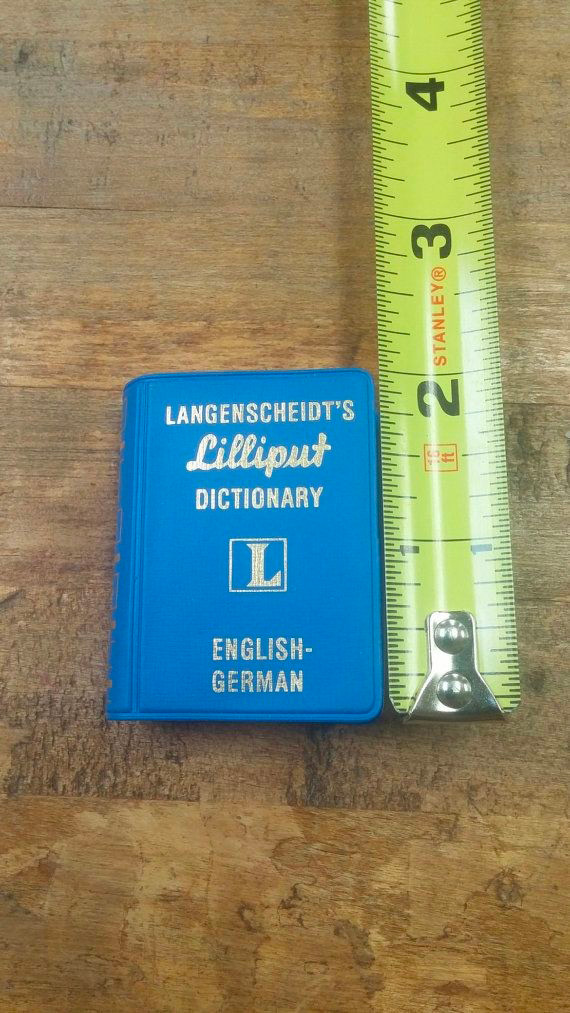
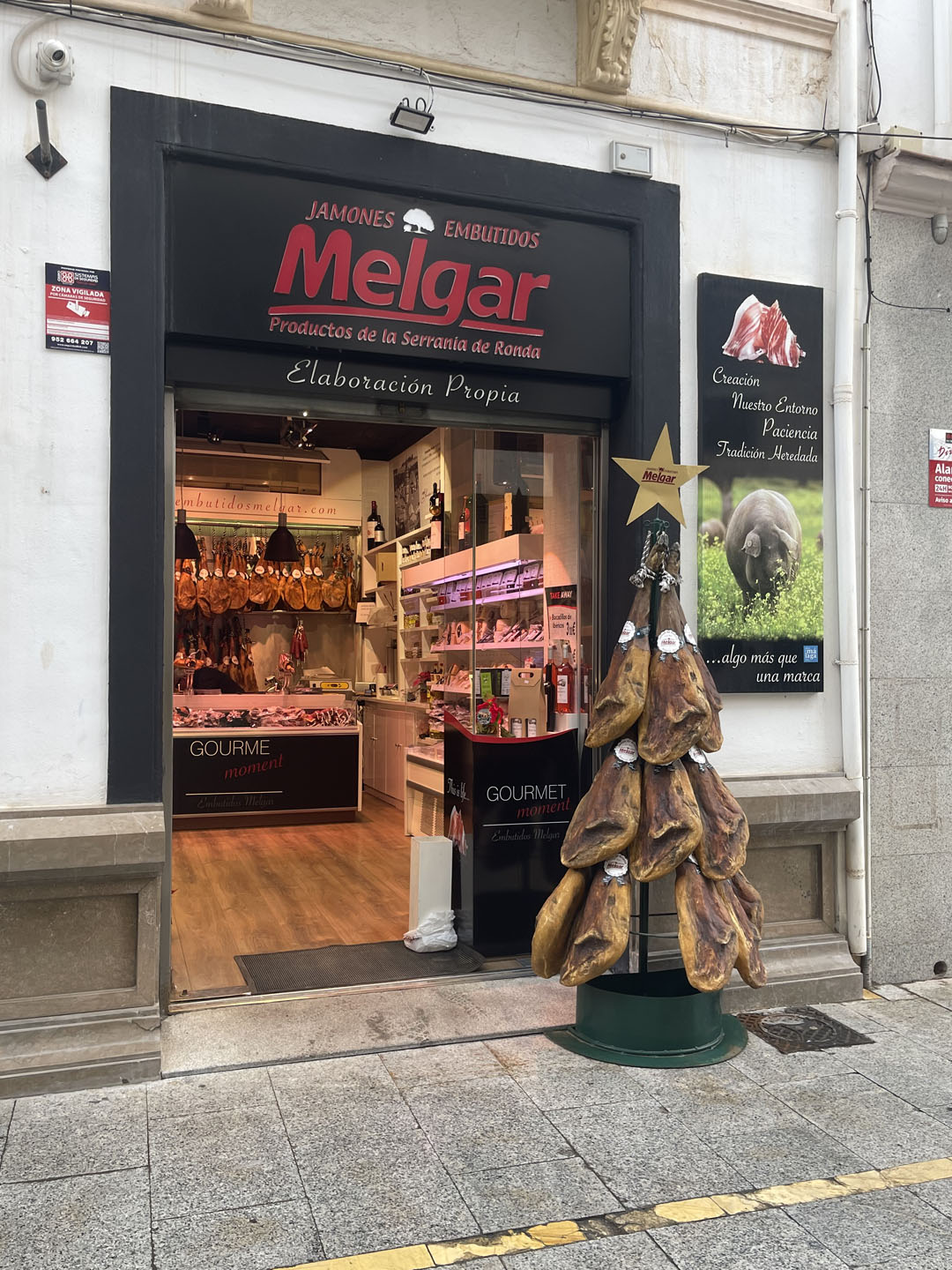
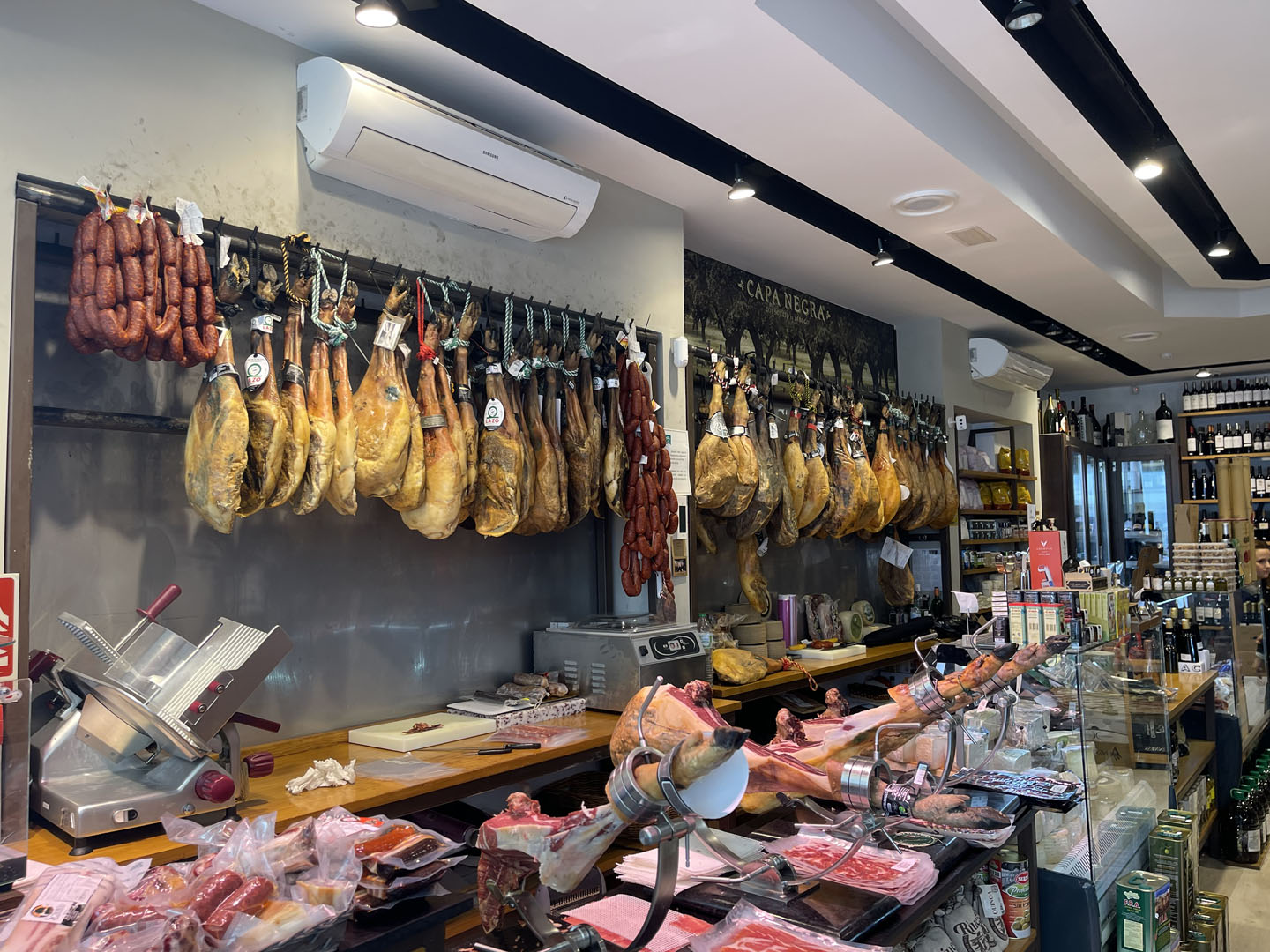
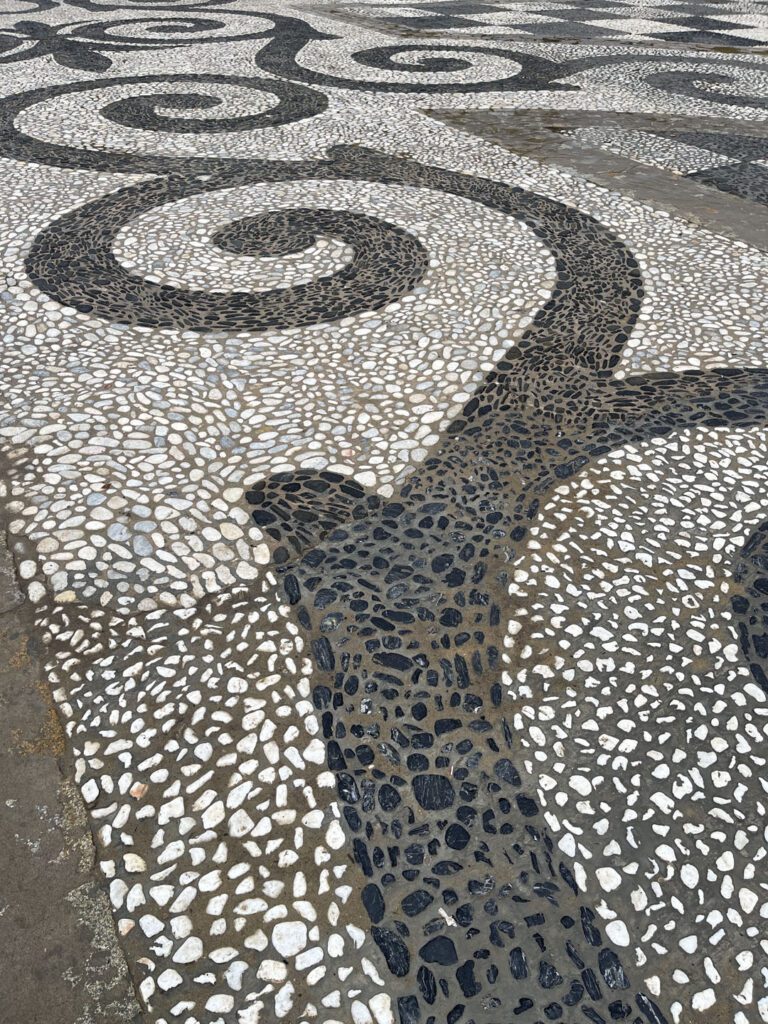
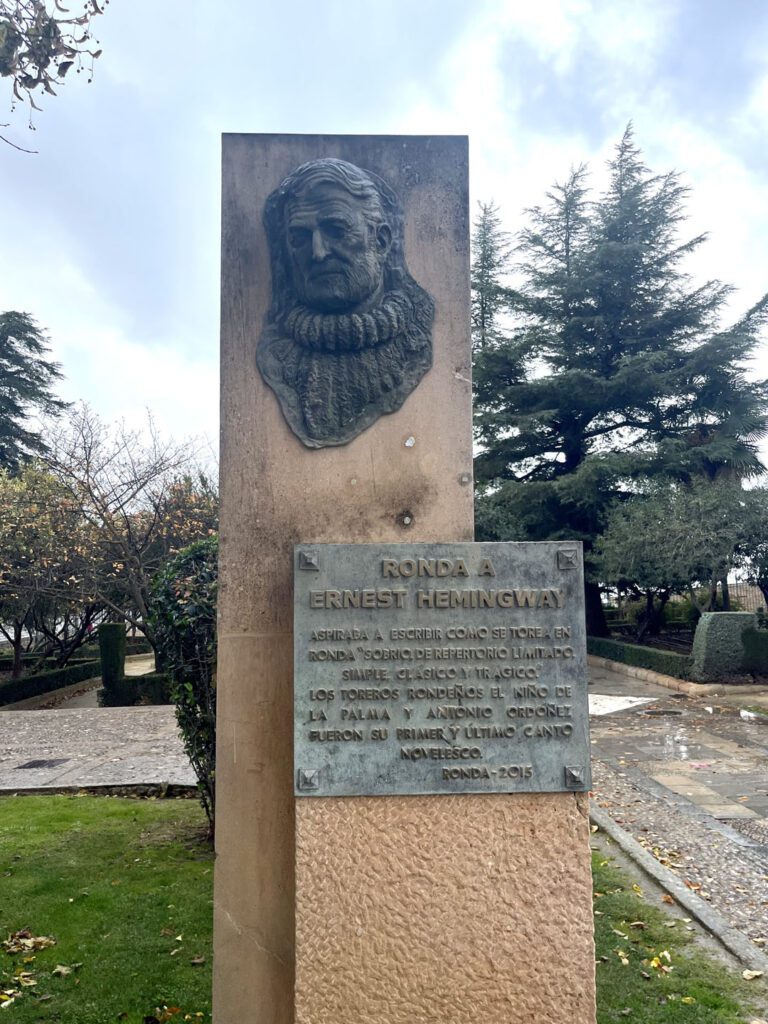
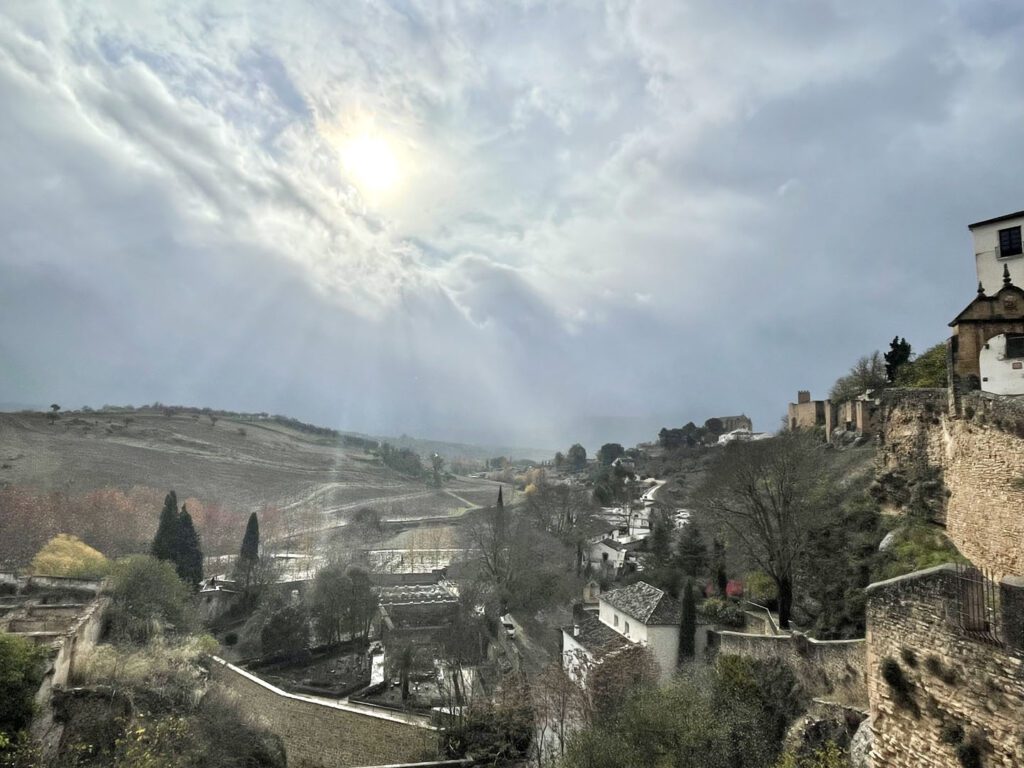
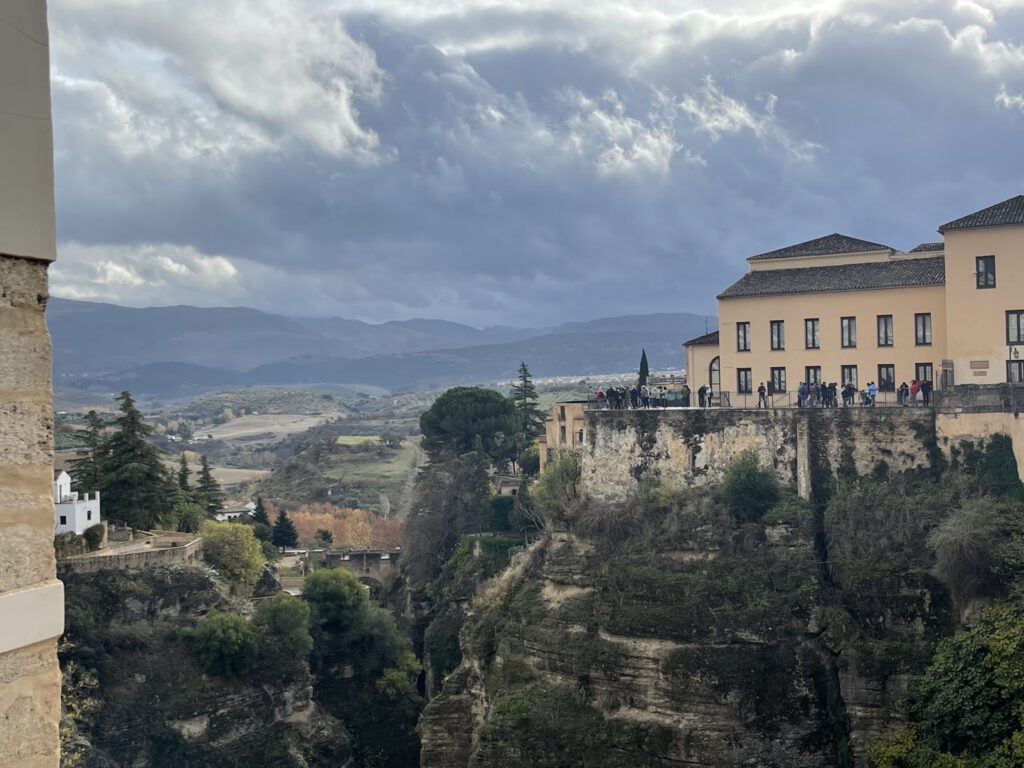
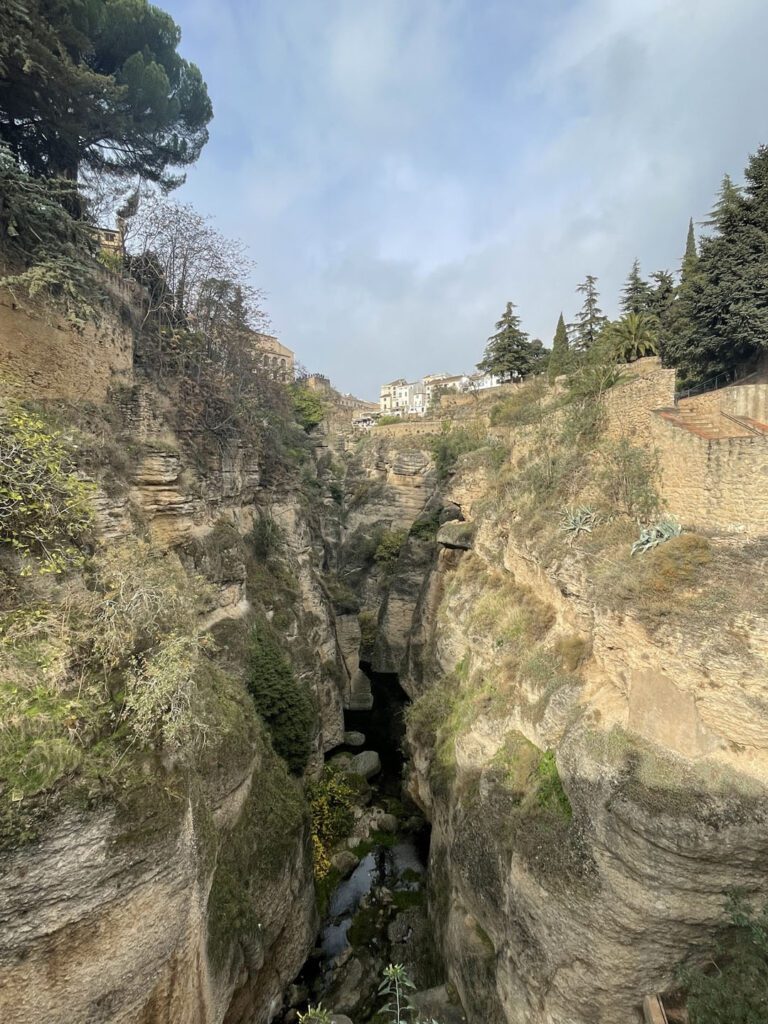
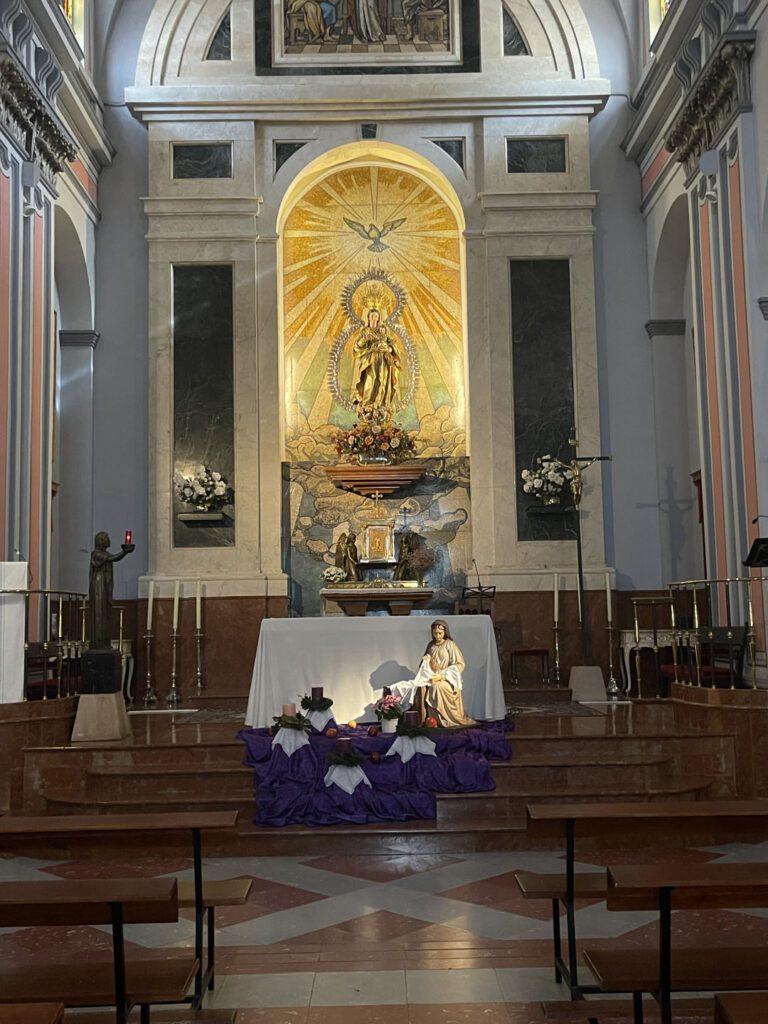
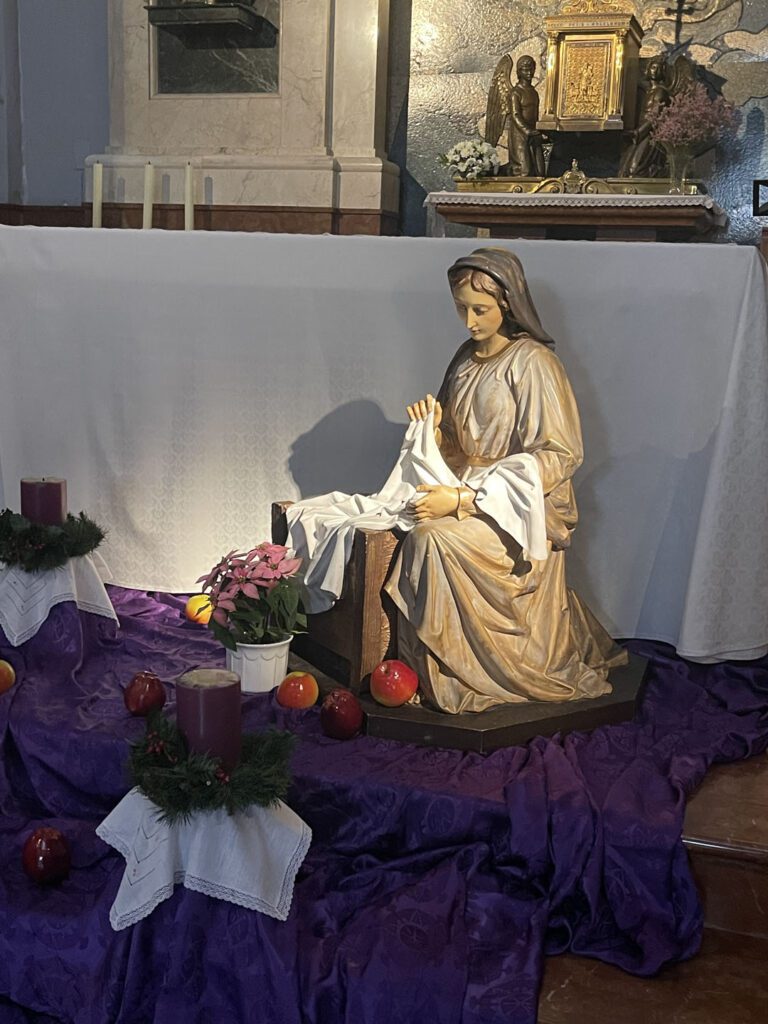
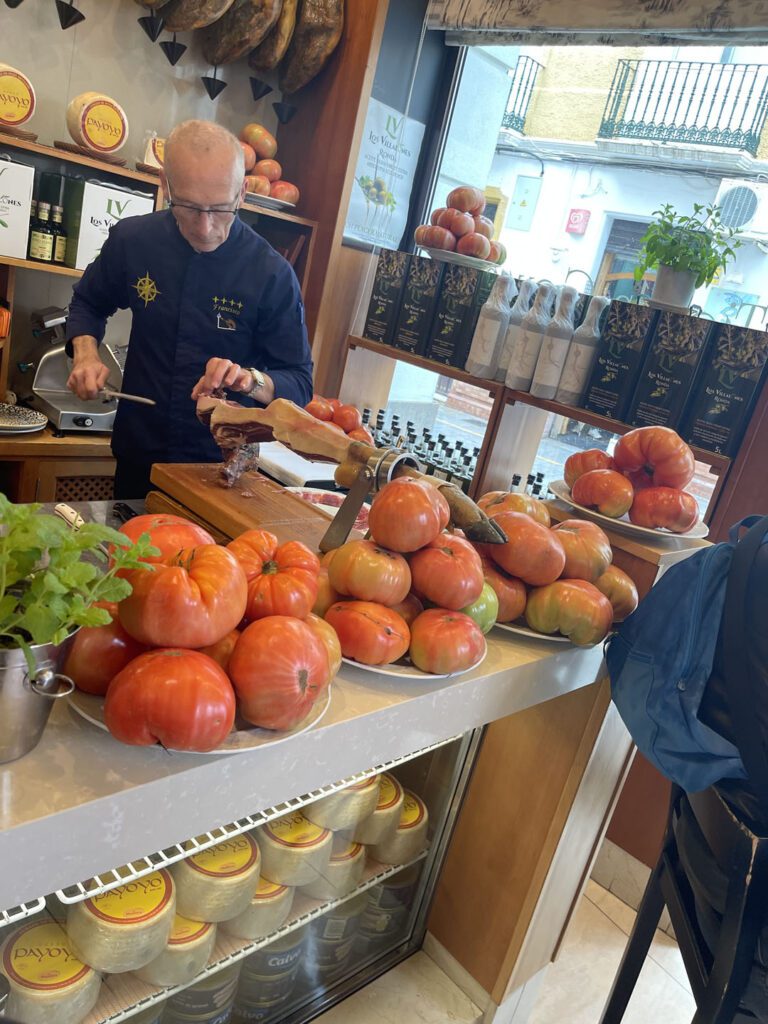
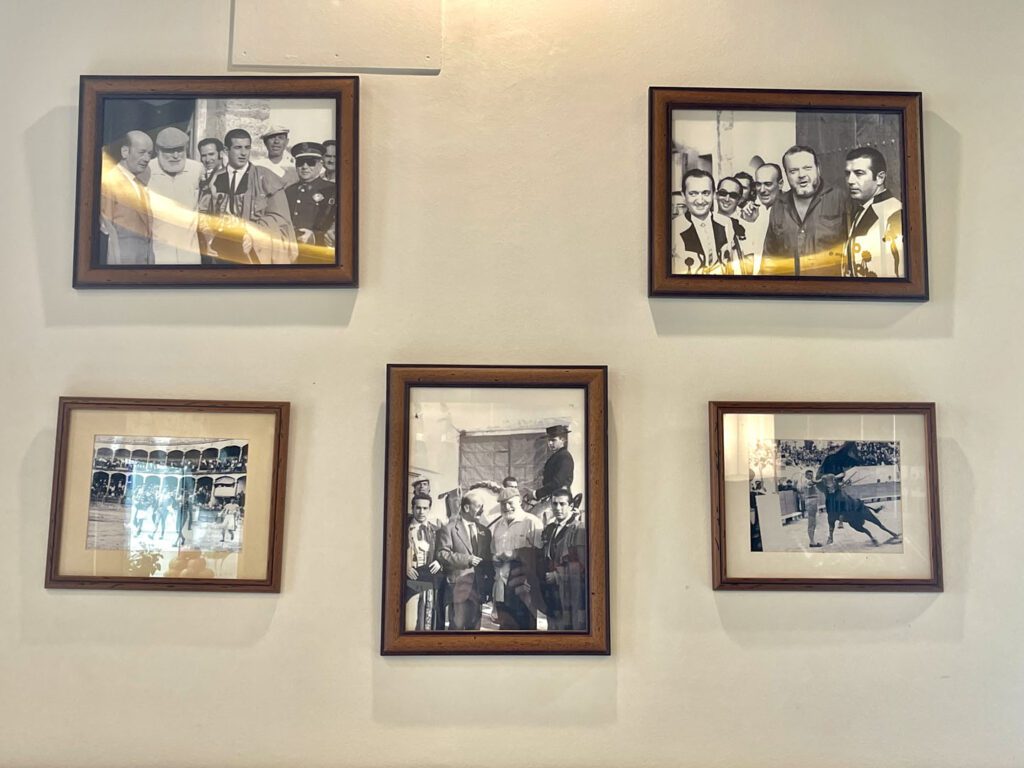
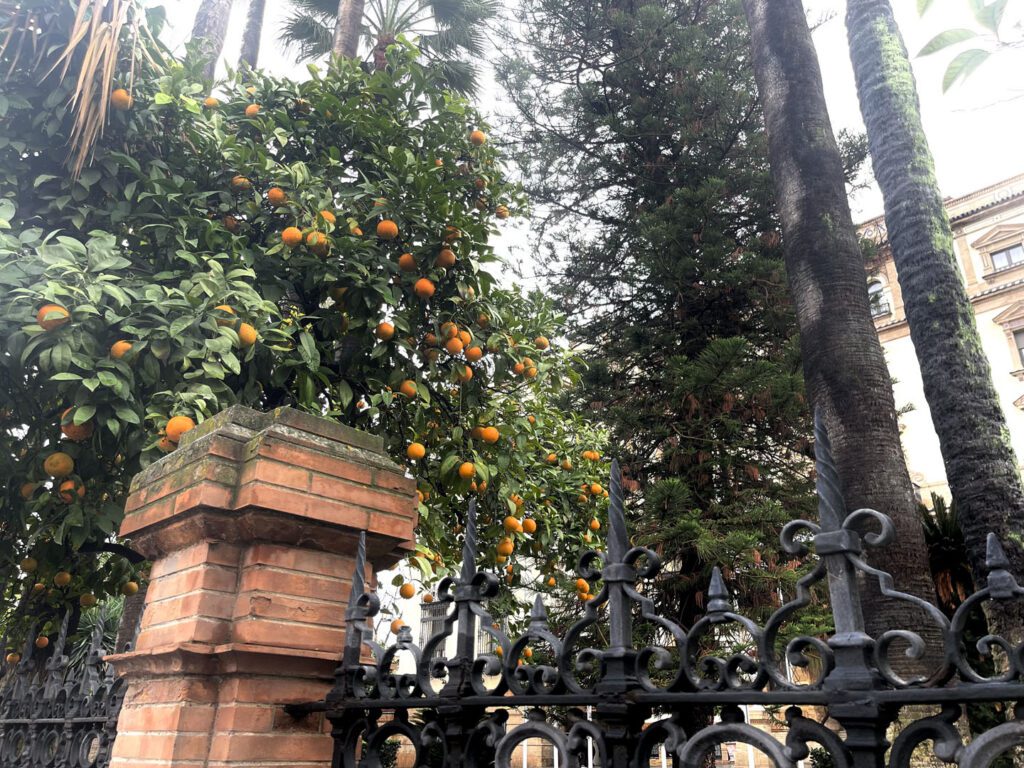
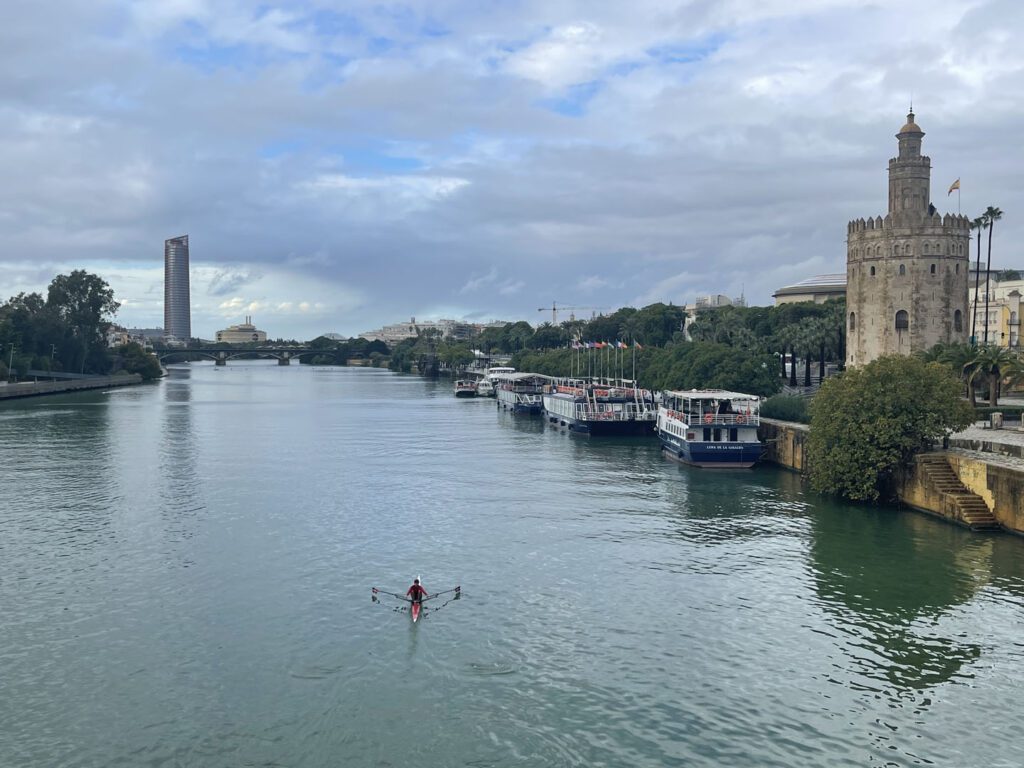
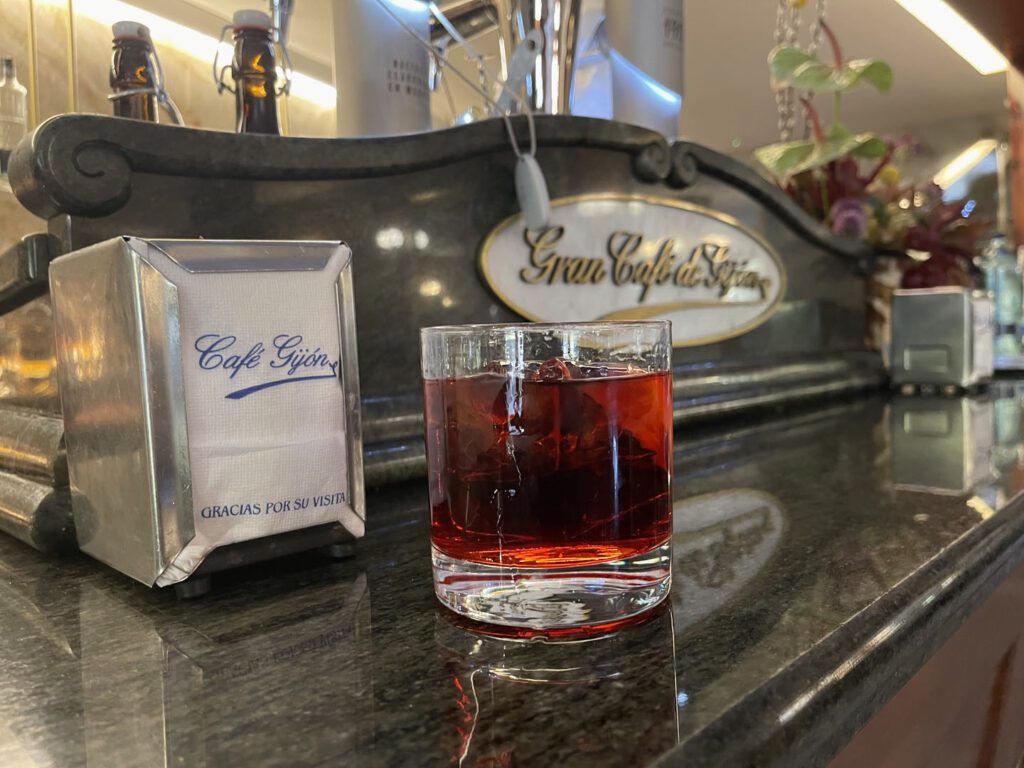
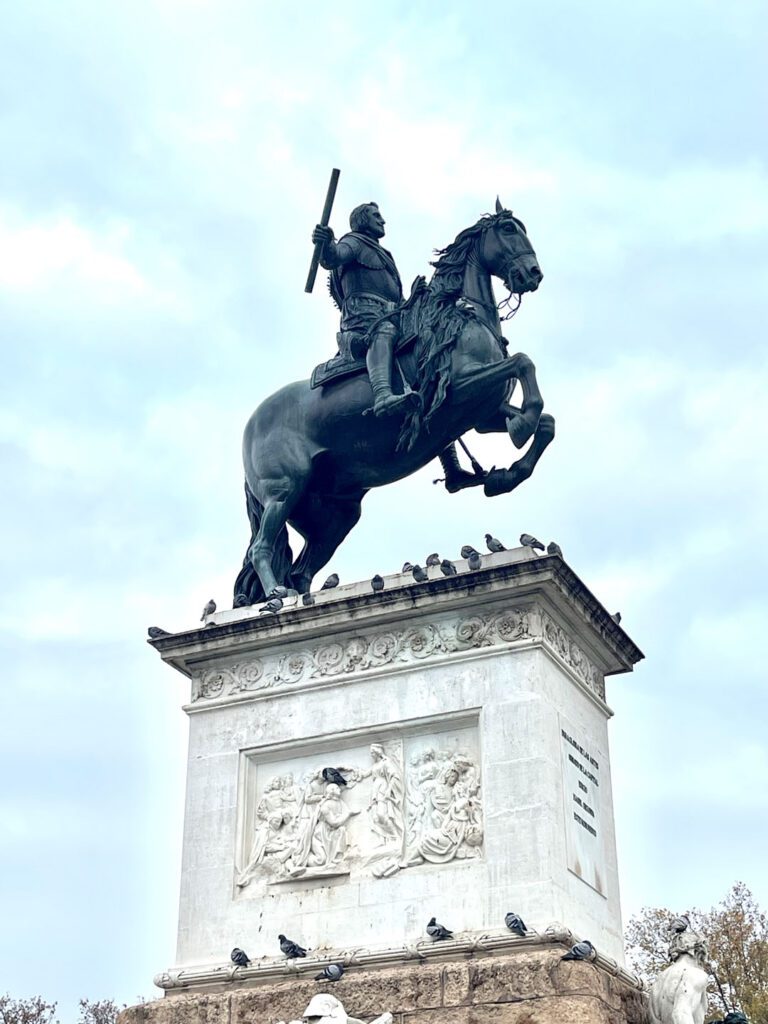
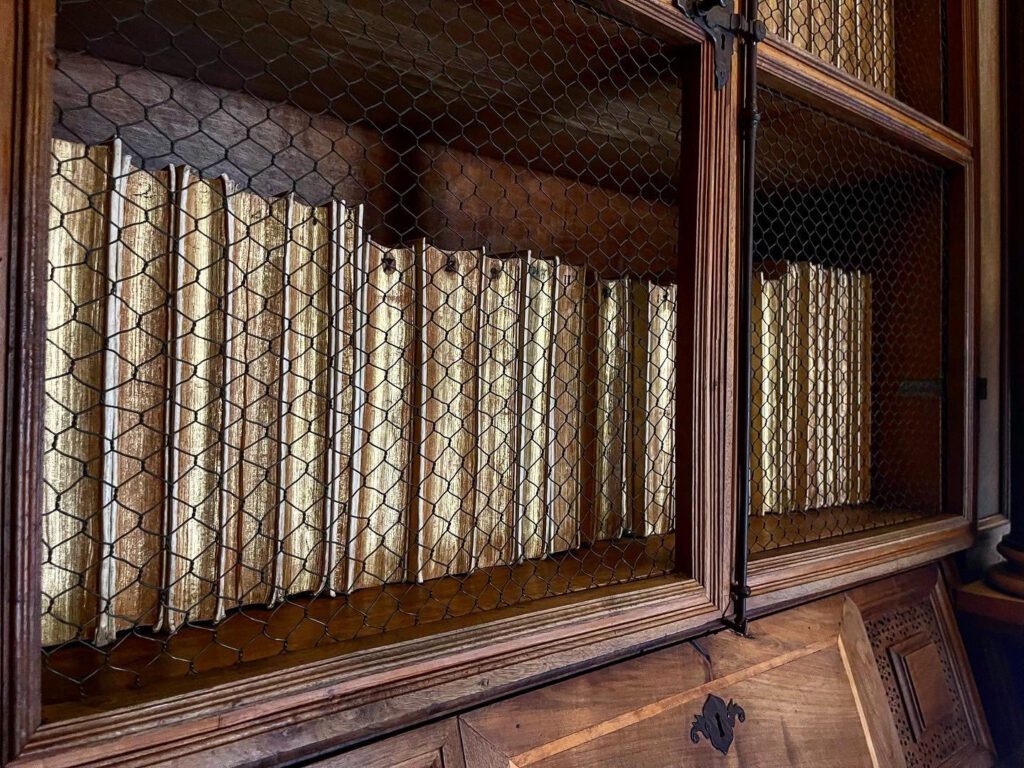
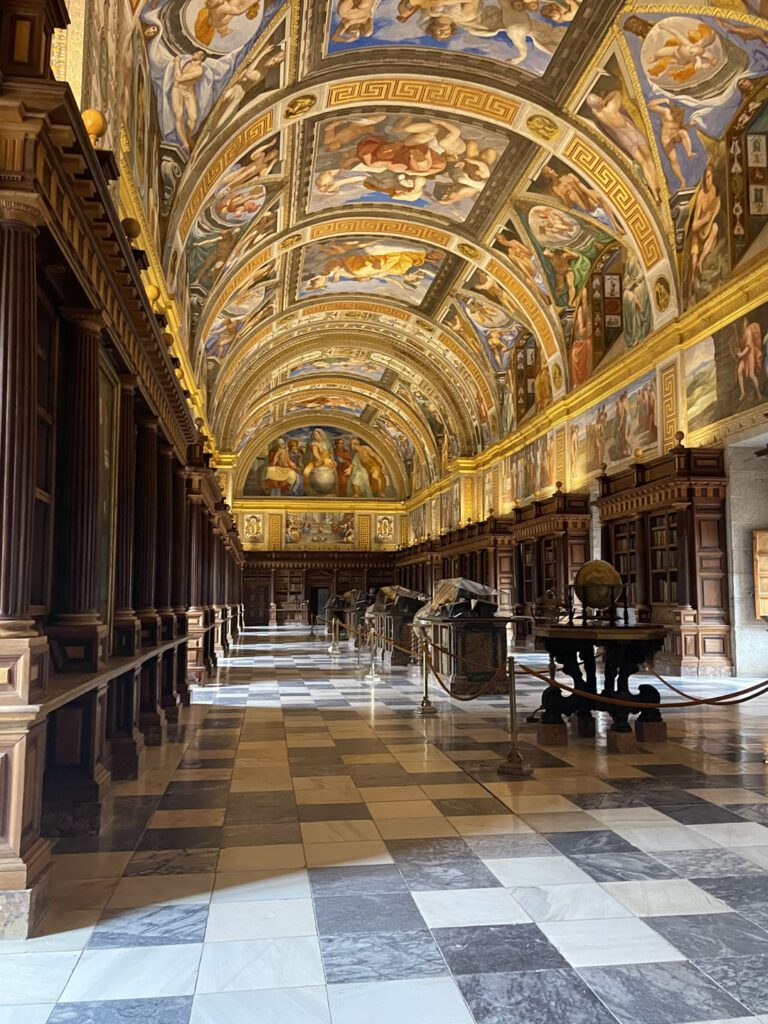
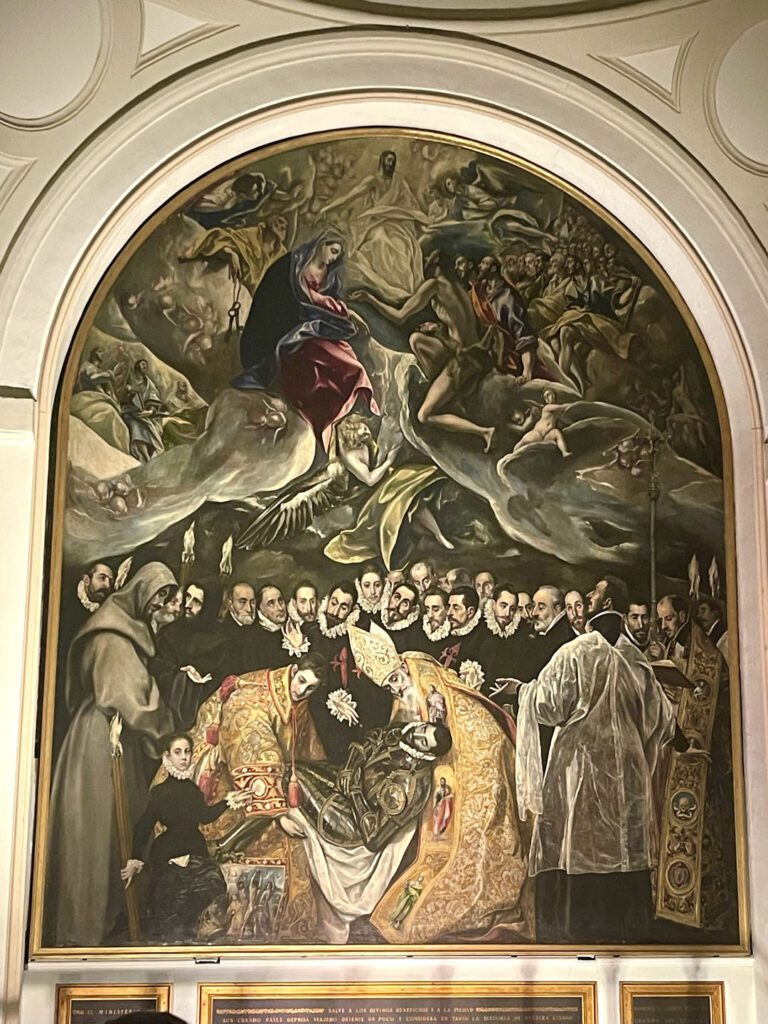
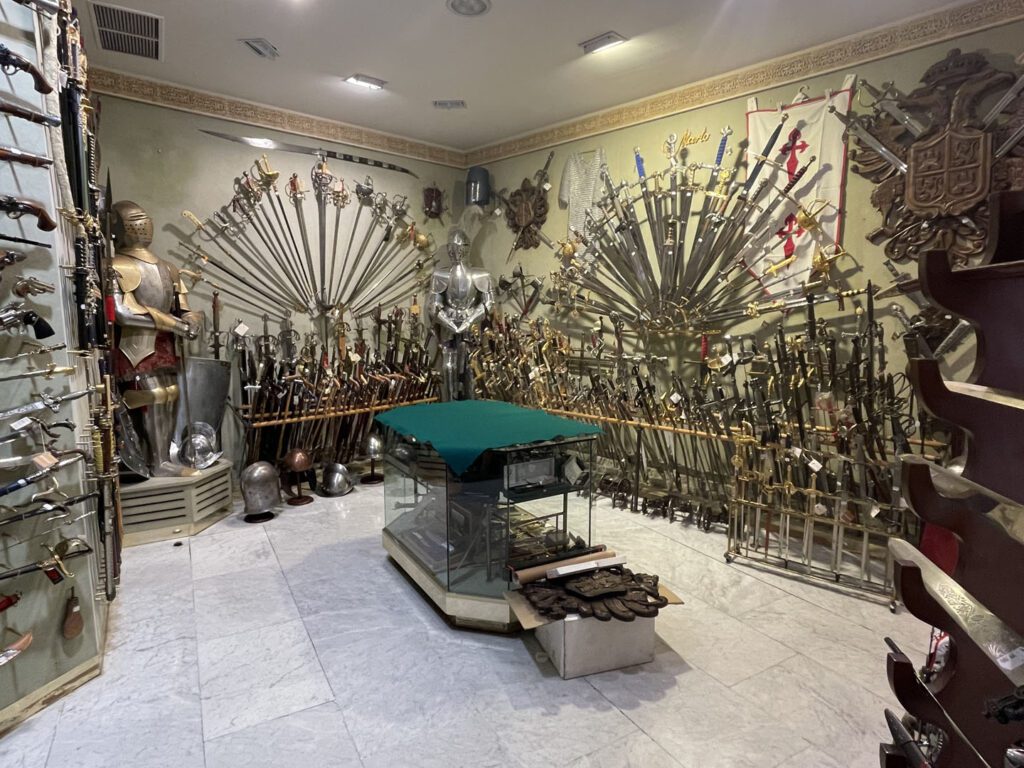
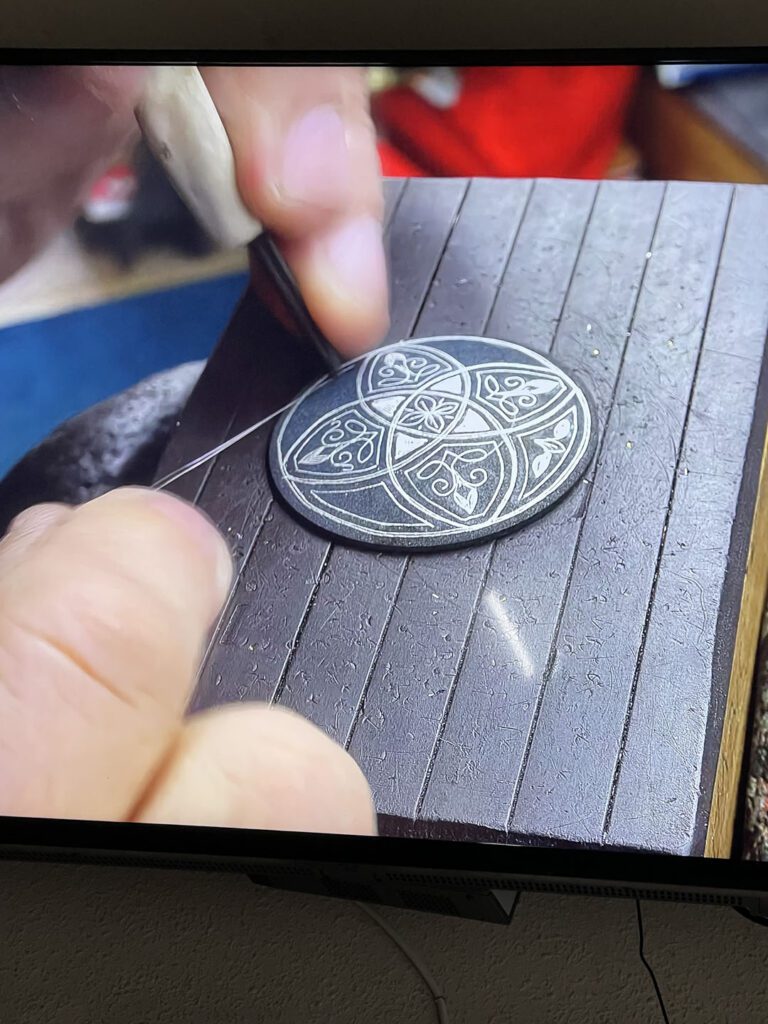
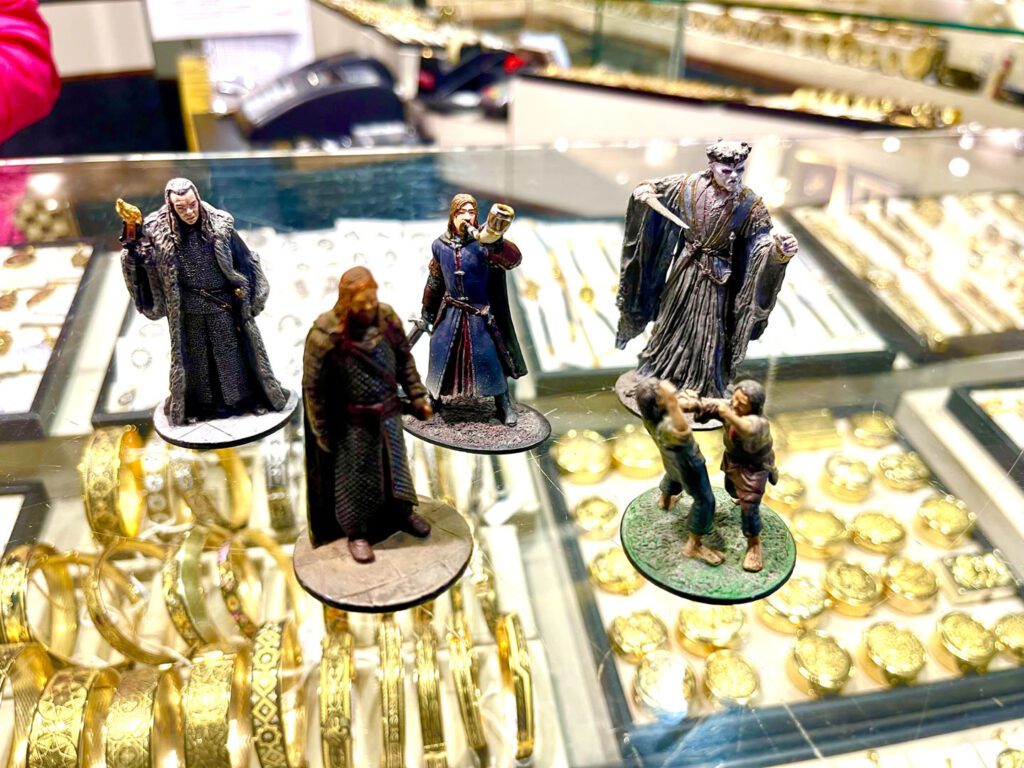
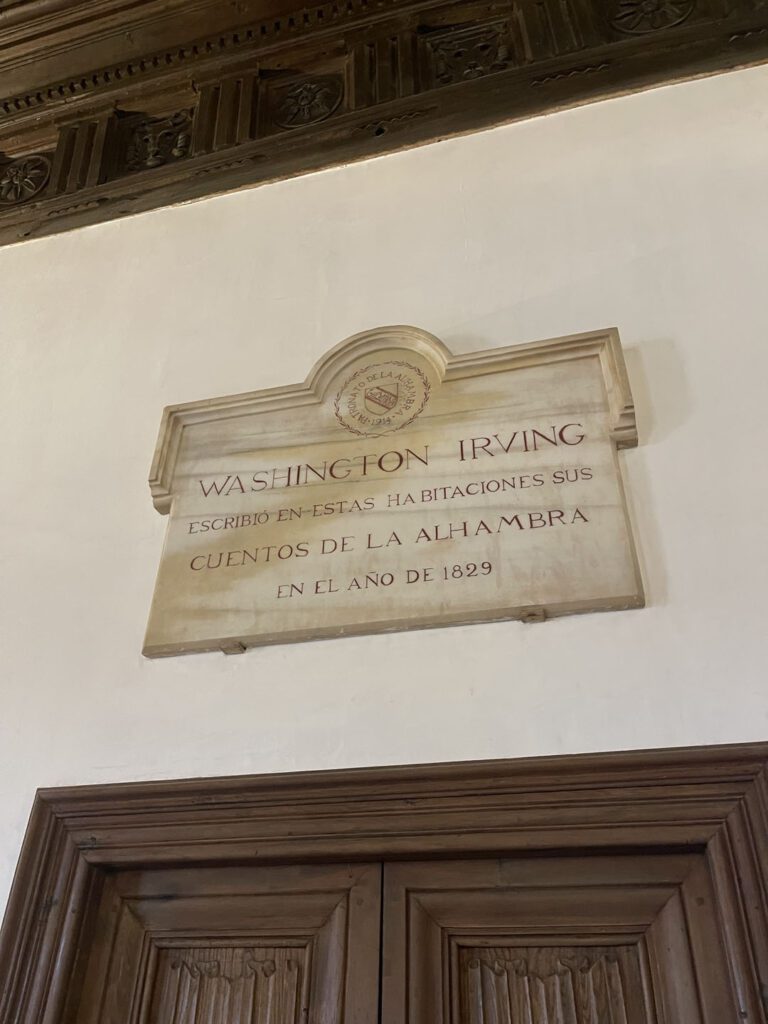
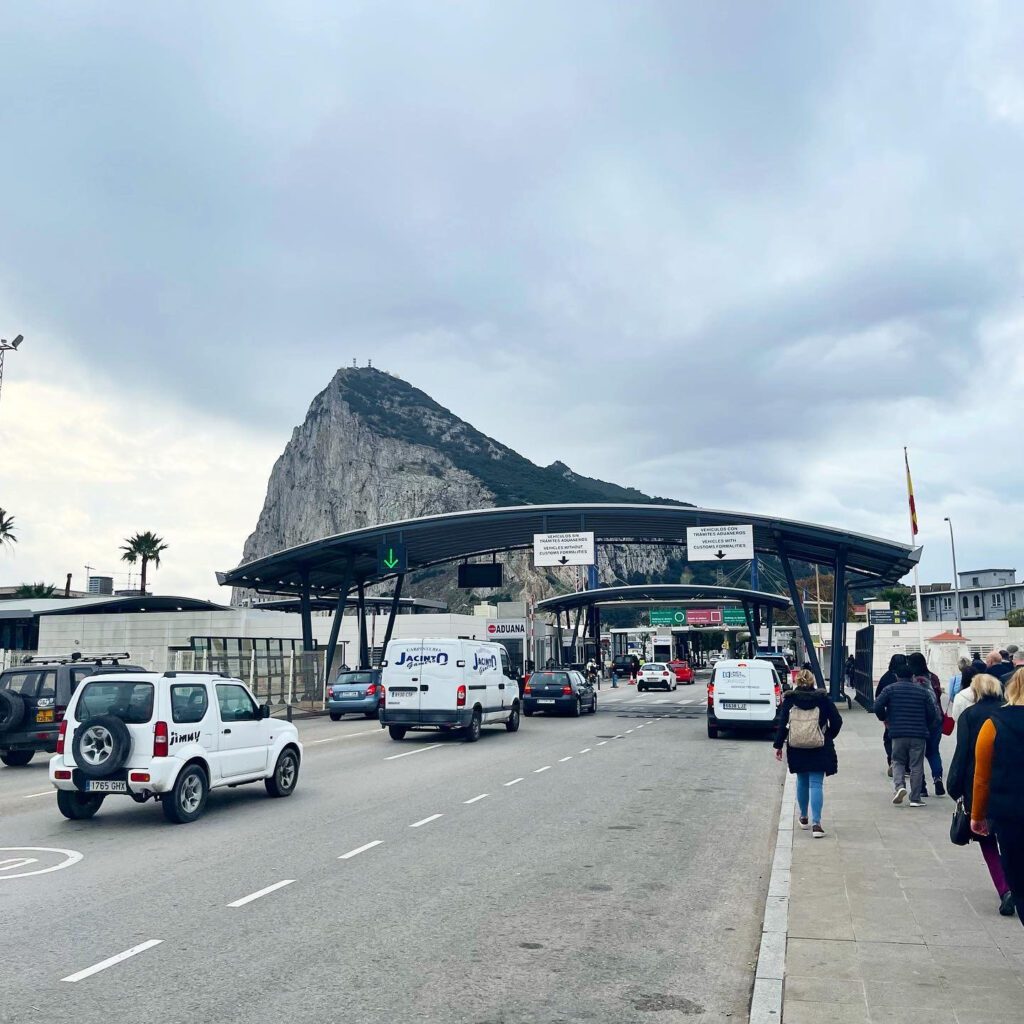
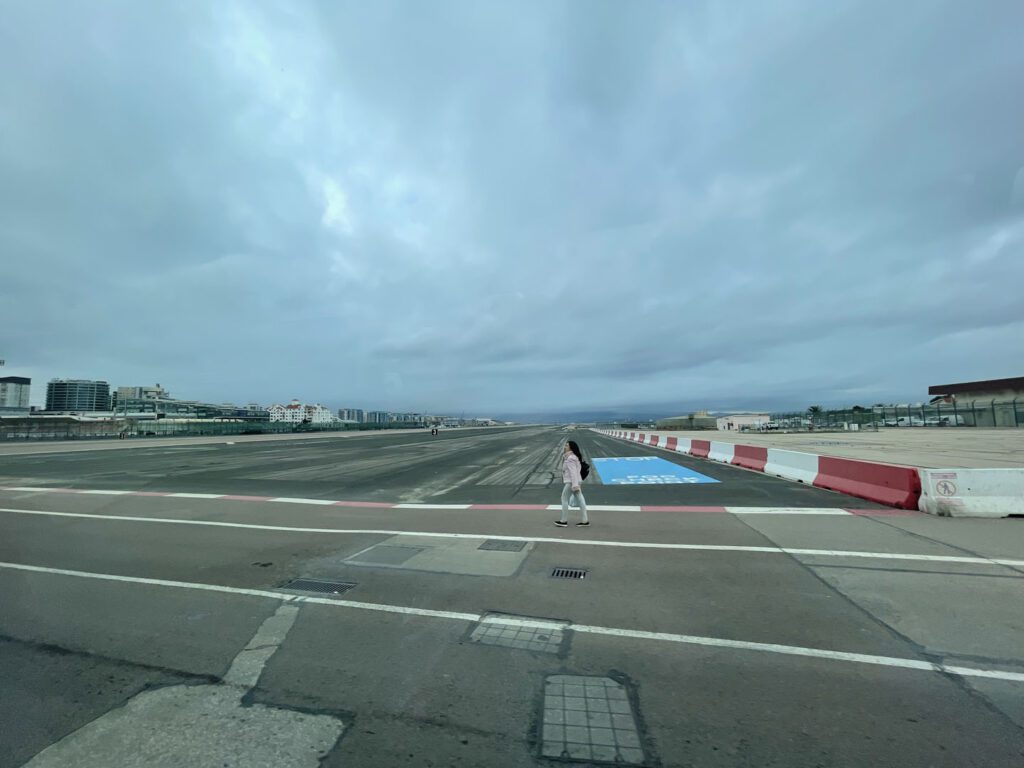
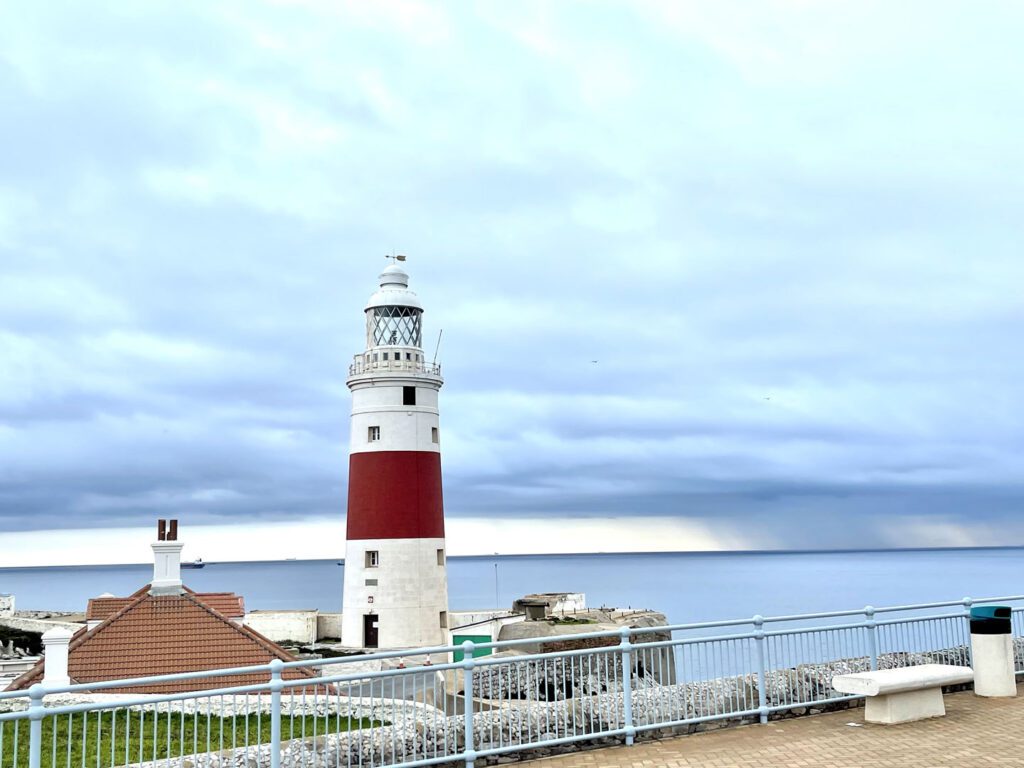
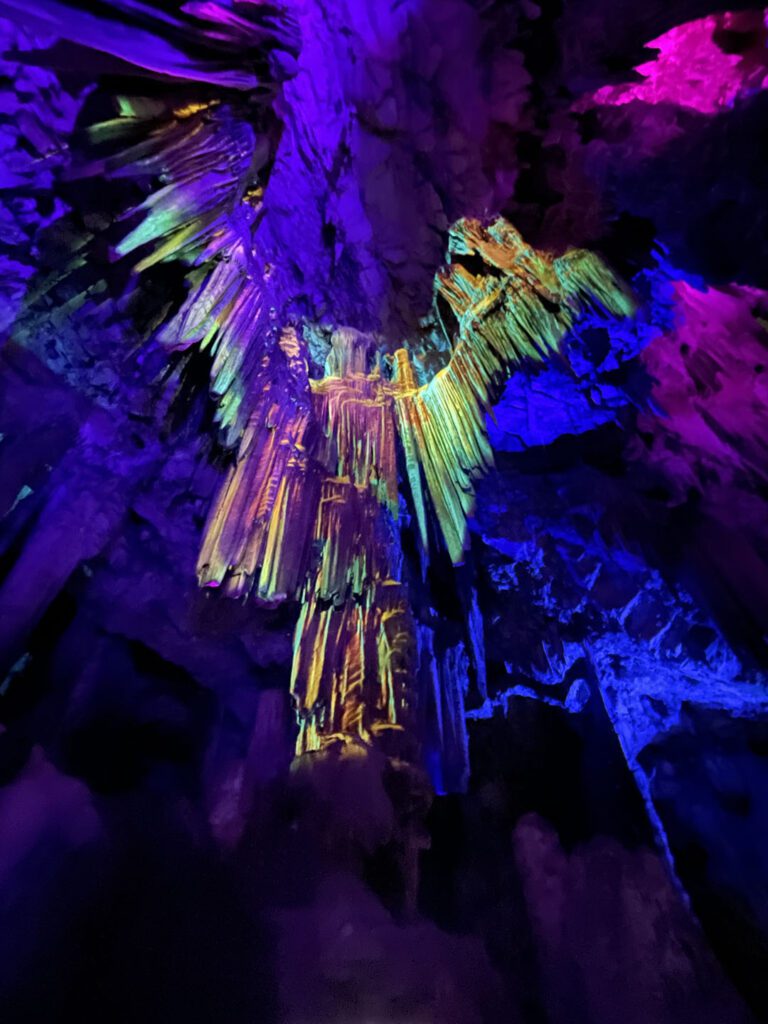
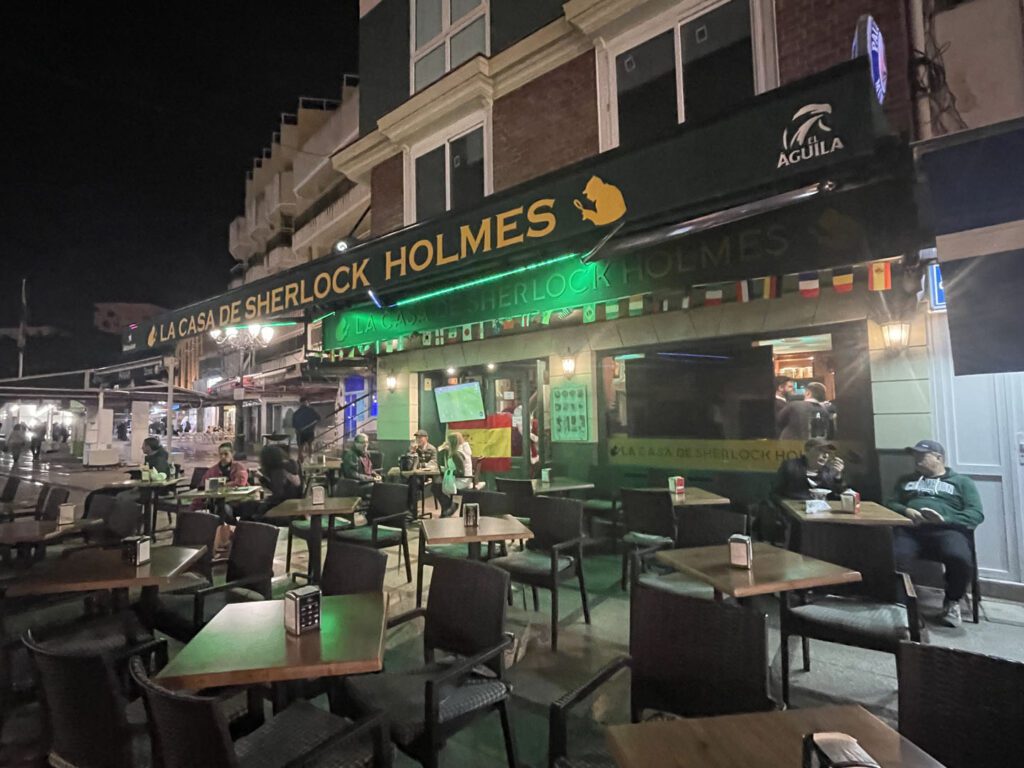
Enjoy the rest of your trip, Chuck!
I can’t wait to be on this trip. I’ve been on more than half of the cities in this itinerary, but never been to the Costa del Sol. Really looking forward to it. 5 more weeks…
Take care.
Livia
Thanks Livia.
The food along the sea is marvelous.
A specialty is skewered sardines grilled over olive wood. So good. I dont like canned sardines…
The beachside restaurants are called “chiringuitos”
I’ll try to put that in next week’s story.
(There’s a statue of “Livia” in the Madrid Archaeological Museum!
Chuck
I spent a little time in Malaga and Seville in 1991. Would love to get back, but not likely. Thank you for sharing your trip. Best wishes always!
Thank you so much reading and commenting Gary!
Please try to look again on Monday and scroll through the images!
Best
Chuck